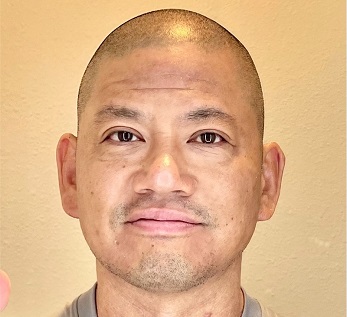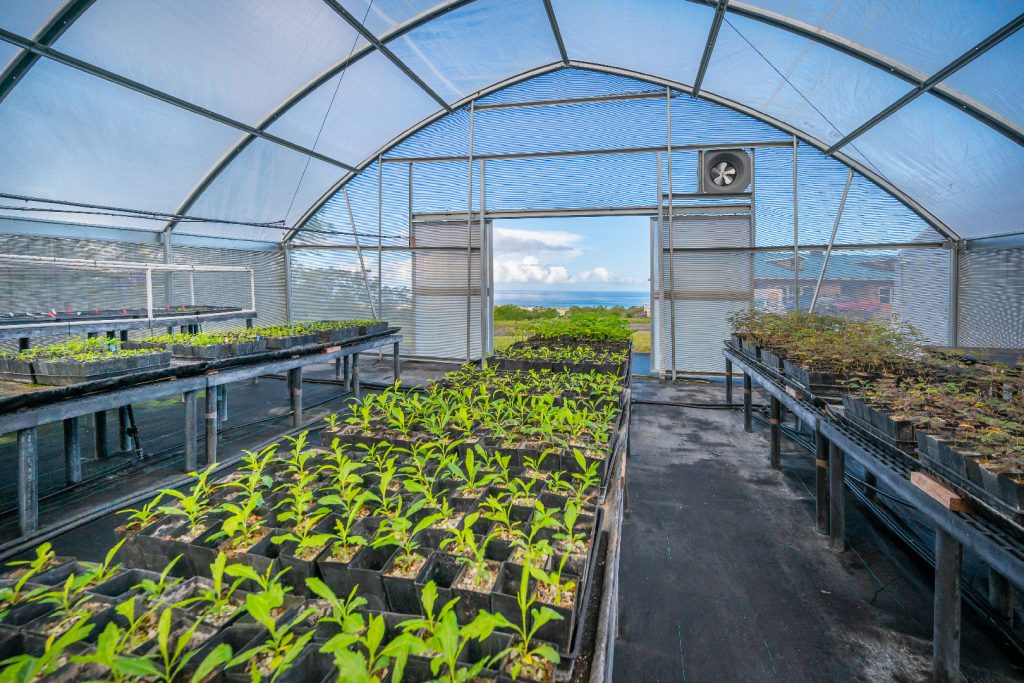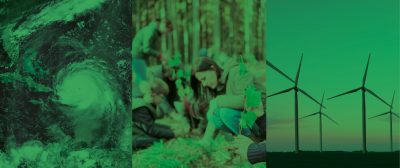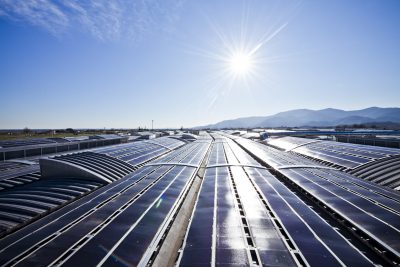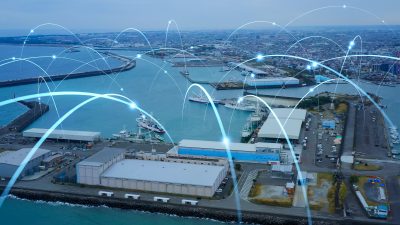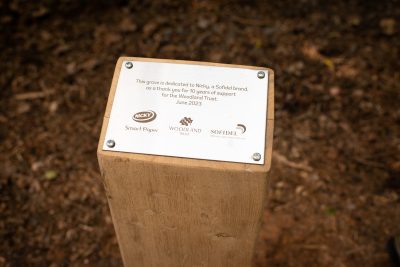As evidence of accelerated climate change is mounting, a group of Silicon Valley ‘techies’ decided to come up with practical plans to help solve the problem
Terraformation was set up more than two years ago after founder Yishan Wong learned that restoring native forests outperforms any other method of carbon capture. Future speaks to Yee Lee, VP Growth & Special Projects, who first met Yishan Wong at Paypal, one of his first jobs in Silicon Valley. He explains the group’s endeavors to not just mitigate but solve climate change.
What is the primary goal for Terraformation? What are you hoping to achieve?
Yee Lee: Terraformation’s mission is to help solve climate change, by causing billions of net new acres of forestry to come into existence in the next decade, so that those trees can reach maturity in the next 30 years, and be able to sequester tons of carbon dioxide. Every generation up until now, as parents, we had at least the hope, or the confidence, that the world would be going to a better place with more opportunity, for the generations ahead. And if you don’t have that confidence, then it’s really hard to figure out what future generations should do, let alone what you should be doing.
So, 2019, for both Yishan and I, was a year of really strong introspection. And we decided, we had donated to climate causes for a long time, so it was time for us to roll up our sleeves and get into the field. Even as technologists, we didn’t necessarily know climate science, forestry, botany and things like that. But we could learn these skills. And there is a skillset to scaling things that Silicon Valley has cultivated over the decades. We wanted to figure out how to apply this skill set to help avert climate change. Basically, we made a pact between the two of us, we’re going to work on climate for the rest of our working lives.
Forests are the most powerful carbon capture system on Earth – what more must we do to protect them?
Yee Lee: It’s super critical for us, once trees have been grown to maturity, to maintain those forests stocks and to make sure that they naturally replenish, because trees have a lifecycle of their own,. So, as long as the trees and forests are maintained and are able to self-regenerate, then there is permanent sequestration.
I think of it as like the highest ROI kinds of opportunities, the very pinnacle of highest ROI is just protecting the trees that you’ve got. The simplest thing you can do to promote permanent carbon sequestration is just keep the trees there. Next in the stack is to find high potential reforestation zones, that the carbon scientists and soil scientists have identified, and go replant those areas, regenerate those areas with forestry. Then, lowest in the stack, there’s a bunch of really hard projects that you could take on, for example, technical interventions to create water supply or to try to reintroduce topsoil to be able to create more forest. But those are sort of like lowest in the stack. The easiest, highest ROI thing we can do is protect the forest resource that we have.
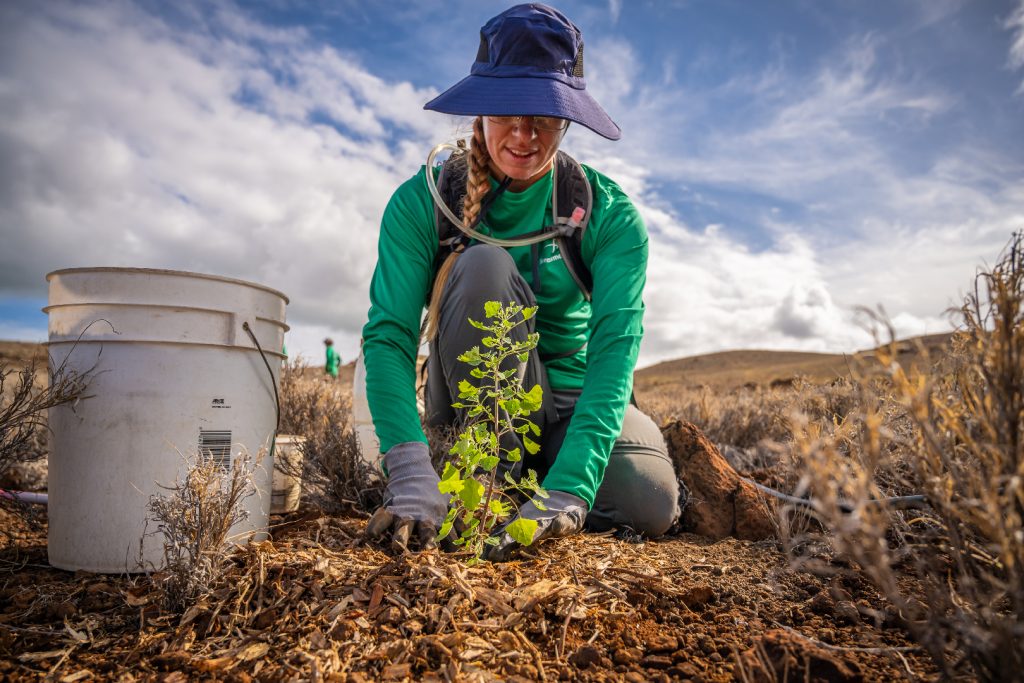
What is Terraformation’s recommendation for restoring native forests around the globe?
Yee Lee: Climate scientists say that we have a 30-year window to affect climate change. These are findings for 2019 to 2020, so we’re down to 28 years now. In order to actually have trees reach maturity in that 30-year window, we have to plant now. We’ve given ourselves about a decade to achieve this mission of planting several billion acres of new forest, and over the next 30 years, we’ll have to safeguard and maintain those forests.
How do you ascertain how to restore the native forest ecosystems, which can absorb many times more carbon than monoculture tree plantations?
Yee Lee: When we talk with partners about what’s needed to make a project successful, we very quickly find a common set of challenges that our projects need to overcome in order to reach scale. Seed supply is one of the most vexing problems, especially if you’re trying to work on native forestry. If you’re just trying to sprinkle eucalyptus, everywhere, cedar or Douglas fir – we have huge seed stocks of timber, plantation seeds, because commercially we’ve been good at stocking up seeds of timber. But we don’t actually want to cover the world with just eucalyptus or bamboo. I’m not saying there’s anything wrong with eucalyptus, but trying to grow eucalyptus forest in a biome that’s not appropriate is going to have very deleterious effects around the flora and fauna, and the soil. It will inhibit the growth of natives and create an ecosystem that is more fragile and more vulnerable to fungus or beetle blight.
Planting native and endemic species that are adapted for a particular biome is really important. In order to do that, you need to have seeds. If you want to cover billions of acres with native species, it’s going to take about a trillion trees. And do we have multiple trillions of seeds? The answer is ‘no’, we don’t. Training and capacity building is another key bottleneck. Just getting more people trained in seed collection, seed banking, nursery operations, how to handle seedlings and germination, how to move seedlings out to a field and establish them in the ground in some of these more degraded soil regions.
What are some of the key challenges you encounter everyday?
Yee Lee: If you’re helping a conifer forest recover from wildfire, you can just sprinkle or spray seeds from a helicopter, or there are even drone planting programs now that could handle the job for that kind of forest. But if you’re talking about degraded and rocky soils, and you’re really trying to help native plants get re-established, you are going to have to get out there, dig a hole at the appropriate spacing, put a seedling in the ground, mulch it, give it some sort of moisture supply. That’s not complicated work, but it is a particular skill that needs training and practice to hone. Today, we estimate there’s only about half a million to a million trained foresters in the world. And the world needs 10s of millions of trained foresters to accomplish the scale of planning that we’re talking about.
Why is seed supply an issue and how can it be fixed if global commitments to tree planting are already outpacing current supply of native seeds?
Yee Lee: Anybody who’s planting trees intensively understands the seed to seedling, germination to planting process. The issue is where do you get supply?
I think that one of the key losses is that we’ve lost this skillset, the ancient knowledge of there are certain trees and they’re founder trees. If you want to be able to replicate that tree, then you need to go collect seeds, but not just from one tree. You should go collect from a diversity of founder trees because even trees of the same species that are on the leeward side versus the downwind side, are growing in different environments. They’re going to produce slightly different seeds. Being able to collect from a diversity of founding trees, and get the knowledge of how to correctly desiccate and store them.
Seeds have been with humanity for a long, long time. But, just in the last couple generations, the knowledge of how to do this seems to have waned. We almost feel like it’s kind of reintroduction of older knowledge that we have known that human societies have relied on for a long time. It’s about training people in those practices and assembling teams to go out in the field and look specifically for trees of certain species, collect their seeds, figure out how to clean, get the seeds desiccate, and store them again.
Anybody who’s planting trees intensively understands the seed to seedling, germination to planting process. The issue is where do you get supply?
Yee Lee
Are you positive for the future success of seed banking?
Yee Lee: Yes. There is sort an awareness. A lot of folks get started with carbon forestry thinking, ‘oh, we’ll grow eucalyptus and bamboo, there are plenty of seeds’. But I don’t want to have to come back 20 years from now and have to replant the whole thing, because of beetle blight. I don’t want to have to redo this whole forest with different species because the species we planted killed off everything else around it. Or, we’re suffering lower regeneration rates, because the flora and the fauna – the insects and the birds around this region don’t work with the flowers and the seeds of this particular species as well as they do with native species.
As soon as you think about long-term planning, and you want to plant a forest that’s going to endure for centuries then you quickly come to the conclusion, ‘we should work with native and endemic species’. If we want to work with native and endemic species then seed supply immediately becomes top of mind for foresters. It’s just about changing people’s mindsets about the style of forest that we’re trying to create. It’s not ‘plant today and then harvest in 10 years’. We’re trying to plant the forest now that’s going to endure for centuries. And if that’s the case, then everybody’s mindset pivots around that and we start to get the right kind of awareness. So, there is an education and awareness challenge, but once people click into that mode, then the conversations are straightforward.
Further details: For more information on Terraformation, please visit www.terraformation.com
